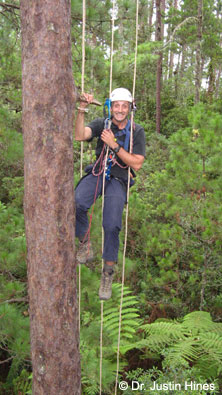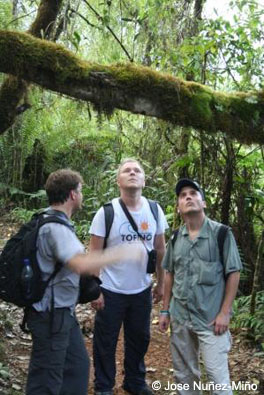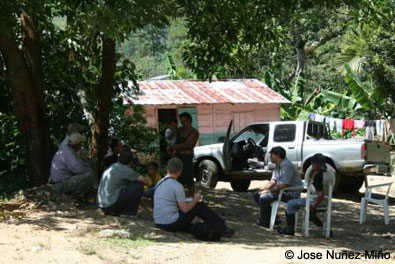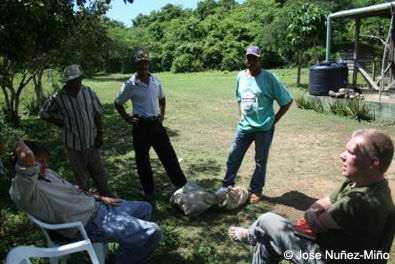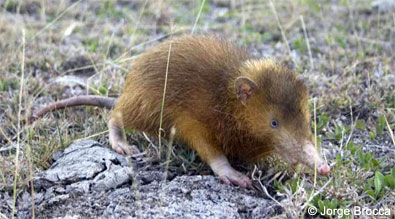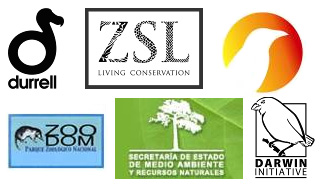The EDGE Team has just received its first blog from Jose Nuñez-Miño, Project Manager for the new UK Darwin Initiative funded Hispaniolan Endemic Land Mammals Project. This project seeks to enable the long-term conservation of the Hispaniolan solenodon and hutia through participatory species action planning, field research and monitoring, and improved public awareness. It is a collaborative project between Durrell Wildlife Conservation Trust, Zoological Society of London, Sociedad Ornitologíca de la Hispaniola, Parque Zoológico Nacional, and the Oficina de Parques Nacionales de la Republica Dominicana.
Over to Jose…
Santo Domingo, Dominican Republic (DR) – Arriving in a country to set up and run a new project is never easy. Luckily for us we have a fantastic in country collaborator in the shape of Jorge Brocca, the Director of “Sociedad Ornitológica de la Hispaniola” (SOH). Not only is he a highly accomplished conservation biologist but also knows how to get things done in the Dominican Republic. He has definitely made everything happen far more smoothly than we could have imagined. It’s a promising start to the Darwin Initiative-funded Hispaniolan land mammal project which is looking at the long term conservation prospects of the last two surviving terrestrial mammals on the island: the Hispaniolan solenodon (Solenodon paradoxus) and the Hispaniolan hutia (Plagiodontia aedium).
I’ve only been here for three weeks; my time has been split between doing some initial exploratory trips into the DR countryside and spending time in the city doing administrative and logistical tasks. The expedition phase took park while Dr Samuel Turvey (ZSL/EDGE conservation researcher) and Dr Richard Young (Project leader, Durrell Wildlife Conservation Trust) were in country. We managed to see a large area of this second largest island in the Caribbean in a relatively short time by travelling far afield into the towering mountains of the Cordillera Central and through to the eastern part of the island (Parque del Este and Punta Cana). We were particularly interested in seeing the different forest types in which the species occur so we can plan the field surveys which will be a large part of the project in the first two years. And as solenodons and hutias can be so difficult to find, we are keen to find out to what extent local farmers and hunters are aware of their distribution in the local area.
Interviews with villagers proved very fruitful and revealed some interesting finds. Initial clues suggest that both species may be present in a range of contrasting habitats; from coastal forest through moist broadleaf forest and possibly up into the pine woodlands at high elevations. One particular challenge that we face is that the local names used for the species vary greatly from one area to another and the same name may be used for several species or for different species in different areas. Future questionnaires will definitely have to take this into account.
Unfortunately, despite our best efforts we did not get to see a solenodon or hutia in the wild although there were promising signs of their presence in some places – notably some solenodon “nose pokes” in the soil at Parque del Este. We were, however, fortunate enough to get to see three captive solenodons at ZOODOM, the national zoo of the Dominican Republic (another project collaborator). These solenodons have recently been brought into the zoo as rescue animals, but are not currently on public display. It was quite a moment coming face to face with this most charismatic and prehistoric of mammals.
During our time in the forest we had lively debates on the best local name for the project which reflects the importance of the species and the aims of the project. We decided on “Los últimos sobrevivientes – Salvando el solenodonte y la hutia de la Hispaniola”. This translates as “The last survivors: saving the Hispaniolan solenodon and hutia” which we feel emphasises the fact that they are the only two remaining species of a land mammal fauna which, before humans arrived, numbered around 25 species, and are now very threatened.
Our work has been nothing if not varied since it even included trips to museums and universities to collect historical and pre-historical records of past solenodon and hutia occurrences across the island, in order for Sam Turvey to create a base line to enable future comparison of the modern-day distributions of these last two endemic land mammal species of Hispaniola.
With such a strong team in an amazingly varied island there is some exciting, challenging and hopefully fruitful work ahead of us. In a week or so I am off to spend time in the field with a local biologist who is an expert in finding these species – I will let you know how it goes, and whether I actually get to see a solenodon or hutia in the wild, in my next blog.
